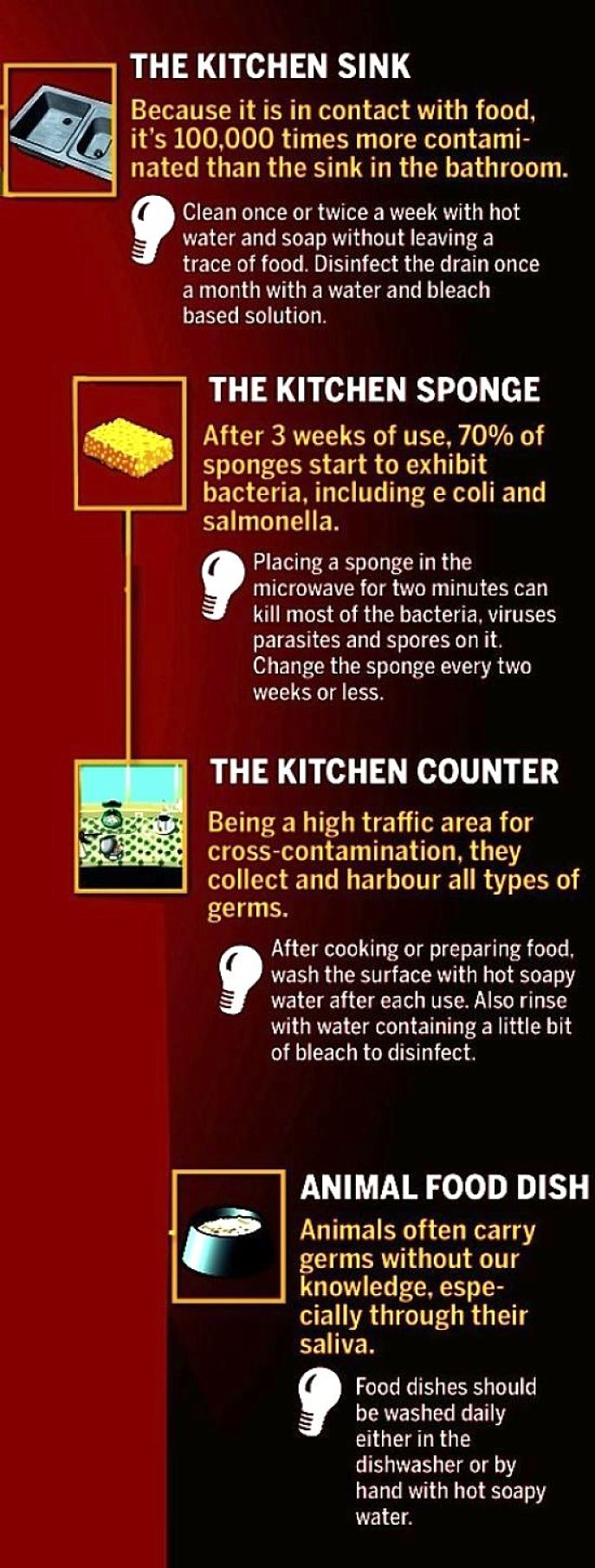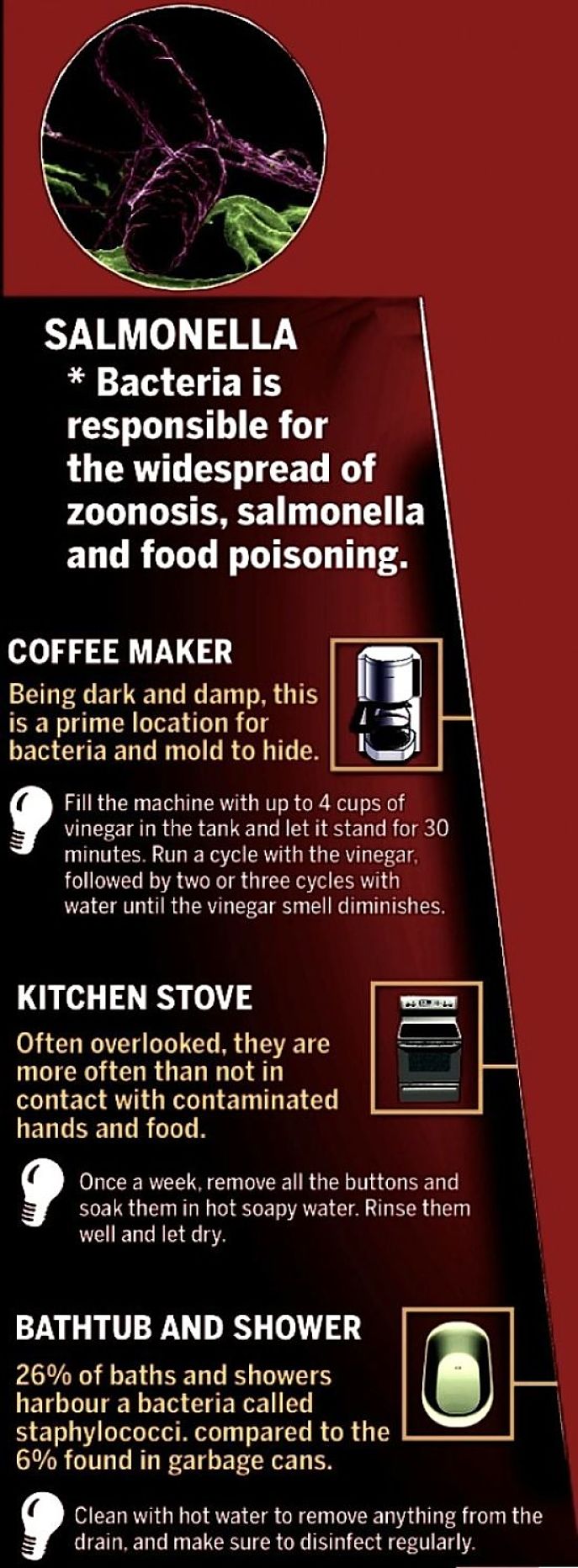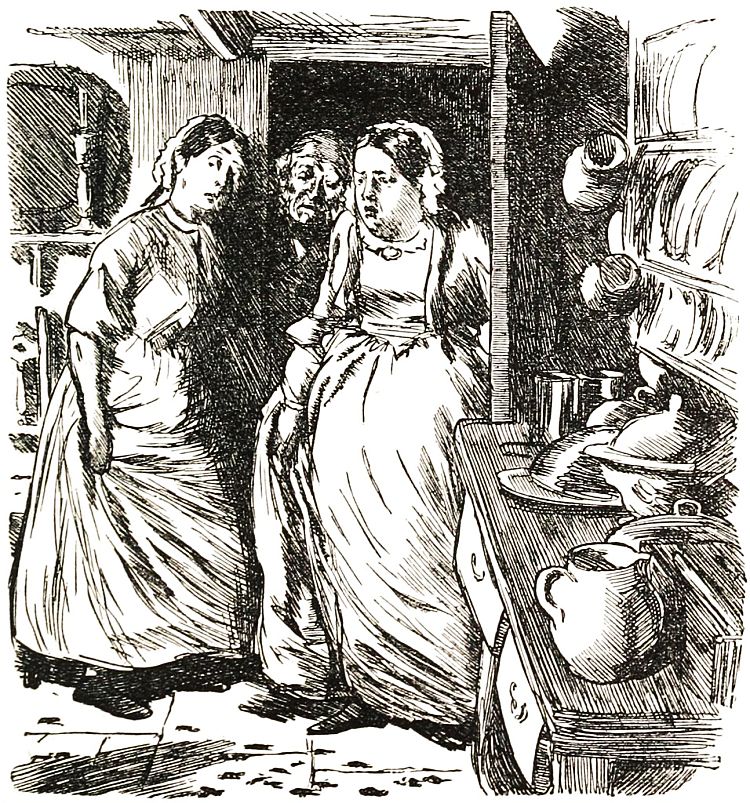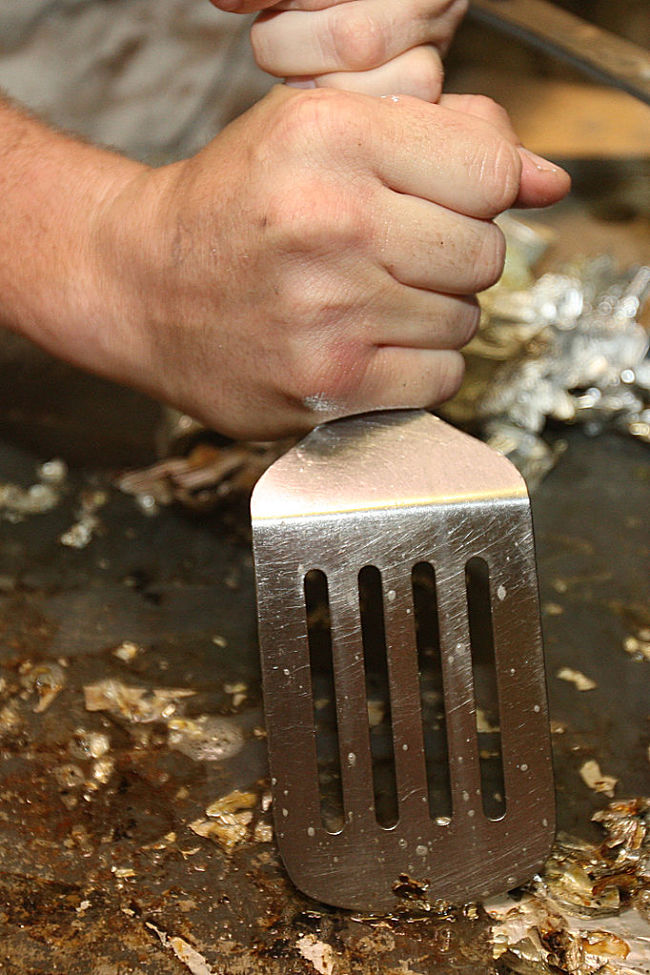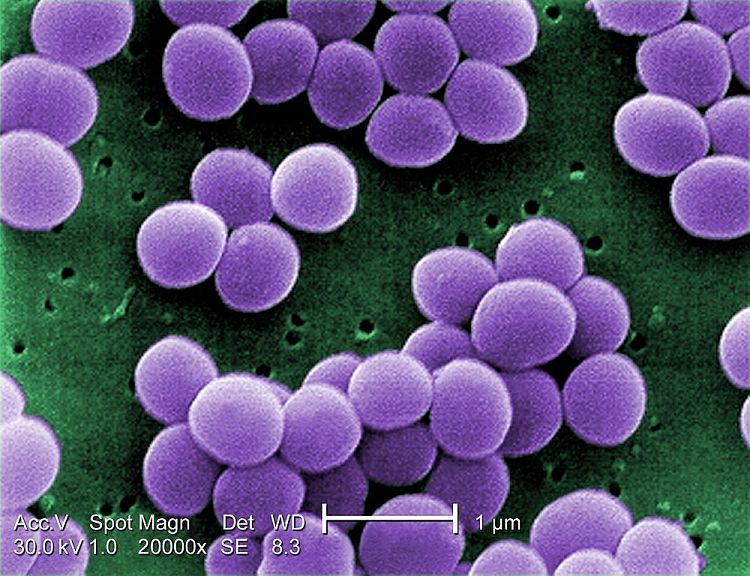Beware of Contaminated Surfaces Items Appliances in Kitchen
A new report has identified the places in household kitchens and appliances that are most likely to have food residues or are contaminated with bacteria like Salmonella and Escherichia coli.
There are many surprise that will shock even the most dedicated cleaners. It's a bit like the finding that the worst spots for germs in offices are the lift buttons and toilet door handles.
The worst place for food contamination at parties and public functions are often the dips as people dip their half-eaten crackers back in for a reload.
It is time for a rethink by learning about the most problematic area you may not have considered, to reduce contamination and potential spread of food-borne disease in the kitchen and bouts of food poisoning.
Research Studies on the Most Germ Contaminated and Risky Items in the Kitchen
Various research studies of domestic and commercial kitchens highlight that it is the major source of food contamination. About 20% of the 10 million cases of food poisoning that occur in USA every year, have been traced to contamination of food eaten in people's own homes. Surprisingly, green Leafy vegetables are the major culprits, not cross-contamination with raw poultry. However about 33% of serious and fatal food-borne diseases are caused by raw poultry that is not handled properly.
An earlier study in 2011 dish sponges and dish clothes were the items with the highest bacterial contamination, followed by kitchen sinks, toothbrush holders, pet bowls and coffee makers. These findings and the recommended remedies are shown in the images at the end of the article.
With the new kitchen contamination and residue study, the research team took swabs from a range of common kitchen utensils, items and surfaces in the homes of 20 families living in the USA.
The volunteers were asked them to swab 14 common items in the kitchen: the vegetable compartment, meat shelf, water dispenser, refrigerator ice dispenser, spatula, pizza cutter, microwave keypad, knife block, food storage containers with rubber seals, flatware storage tray, can opener and blender or food processor. The scientific studies tested for 4 common microorganisms known to be associated with food borne illness: Yeast and Molds, E. coli, Salmonella and Listeria.
- The E. coli bacteria is a human gut bacteria that can spread rapidly through contaminated water and food leading to urinary tract infections, diarrhea, gut infections pneumonia and kidney diseases.
- Salmonella bacteria can cause death and serious illnesses through severe diarrhea, high fever and stomach pain.
- Listeria monocytogenes bacteria are known to can cause muscle aches, fever, diarrhea and various gastrointestinal symptoms. A serious listeria outbreak in 2011 linked to cantaloupe melons caused 33 deaths and serious illnesses in 147 people in the USA
The results are shown below:
E. coli were found in 25% of the items tested:
- can opener and pizza cutter
- blender gasket
- rubber spatula
- refrigerator meat compartment
Salmonella was found on 25% of items tested:
- rubber seals on food storage containers
- refrigerator ice and water dispensers
- blender gasket
- spatula
- meat and vegetable compartments in the refrigerator
Listeria was found on 10% of all items tested:
- refrigerator vegetable compartment
- refrigerator door seal
Yeasts and molds were found on 100 % of items (all 14; all samples).
Six items had very high level of of mold:
- rubber seal on a food storage container
- refrigerator ice and water dispensers
- blender gasket
- spatula
- refrigerator vegetable compartment
The six items with the worst contamination were:
- refrigerator vegetable compartment
- refrigerator meat compartment
- rubber-sealed food storage container
- can opener
- blender gasket
- rubber spatula
These items come in direct contact with raw foods such as meats and this increases the risk of cross-contamination between cooked and uncooked foods leading to food bourne illnesses.
Surprise Findings for Items and Area Most Contaminated
The biggest surprise was blender gaskets which were contaminated with E. coli and Salmonella as well as yeast and mold. It appears that people don't fully disassemble blenders to clean the gaskets by hand or in the dishwasher. Repeated use means the residues build up and become a potent cocktail and dangerous gunk.
Can openers were another big surprise. It appears that people tend to open a can and then put them back into the drawers without properly cleaning them. The next time a can is opened the micro-organisms that have flourished in the residue get neatly injected into the contents of the next can
Despite suspicions, the microwave keypad/buttons were not frequently contaminated.
The worse items were: But it was not.
Blender gaskets – these are the rubber seal at the base of the blender that helps prevent leaks. Most people don't realise that these seals should be cleaned every time you use the blender.
Spatulas - seem to be left out of the normal washing routine, but they can be very dangerous especially when the same ones are used for raw and cooked meat dishes. spatulas were contaminated with mold and yeast, as well as E. coli. Some designs have 'nooks and crannies' that can be difficult to clean. The single piece silicone ones are best.
Water and ice dispensers - Surprisingly most people don't realised that these areas can get contaminated and despite the cold do provide moist environments where micro-organisms can breed. They often contained molds and contain yeast. People don't clean them often enough.
Refrigerator vegetable compartments were of particular concern, because vegetables are know to be a major cause of food bourne illnesses, and they are eaten raw. They were found to be contaminated with Salmonella and Listeria. If these compartments are not washed properly each new batch of vegetables added to them gets contaminated and provides a constant risk.
Tips for Cleaning and Reducing Contamination in the Kitchen
Refrigerator meat and vegetable compartment - Remove the drawer and wash thoroughly with warm water and a mild detergent before each new batch of fruit and vegetables is added. After cleaning wipe over with a solution of 1 quart of water (or vinegar) with 1-2 tablespoons of baking soda. Rinse and wipe dry. This also help to reduce odors.
Always store different types of produce, especially meat and vegetables, cooked and raw food, separately in the refrigerator.
Blender gasket - Unplug your blender, remove the blender jar from the base and remove the gasket at the bottom. Wash by hand or in the dishwasher, if safe. Rinse and dry all components before re-assembling. Repeat the cleaning after each use.
Can opener - wash the can opener thoroughly after each use, or put in the dishwasher after preparing each meal.
Rubber spatula - Two-piece spatulas need to be taken apart to be properly cleaned. The single piece silicone ones are best as they are easy to clean and are dishwasher safe.
Refrigerator water dispenser - Clean regularly following the manufacturer's instructions. Regularly rinsing with vinegar and rinsing well is generally OK.
Refrigerator ice dispenser - Regularly switch off the unit and was the bin with mild soap and warm water. Rinse with vinegar and dry. Clean fortnightly.
Knife block - Placing knives back into the block without cleaning them happens, even if it is a mistake. the block itself needs to be cleaned regularly to deal with any errors. Wash and rinse thoroughly with clean water. Because it is hard to get inside it is best to take extra precautions. Sanitize the holes by flooding them with a mixture of household bleach and warm water. Drain after one minute and rinse.You can use vinegar instead.
Food storage container with rubber seals - If the units you have are dishwasher safe, wash both the lid and the container. Many people don't wash the lids. The units can also be washed by hand. Rinse thoroughly and allow to dry.
Major Sites of Bacterial Contamination and Cleaning Suggestions
